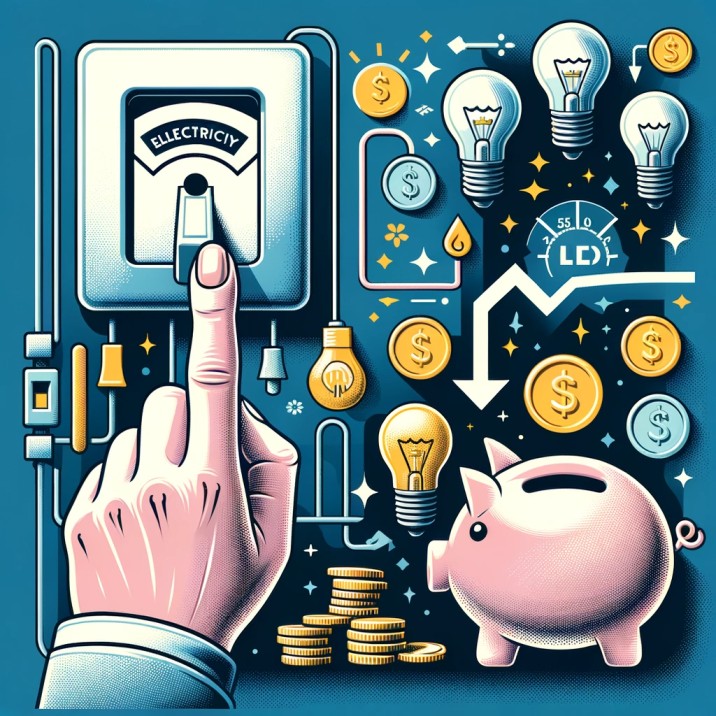Does it save money to turn off lights? The question of whether turning off lights saves money is a common one in households and businesses alike. While the answer is a resounding ‘yes’, the extent of the savings can vary based on several factors. This article explores the cost-saving benefits of turning off lights, examining how much can be saved and under what circumstances.
Understanding Energy Consumption
- Lightbulb Types and Energy Use: The amount of electricity a lightbulb consumes depends on its type and wattage. Incandescent bulbs, for instance, consume more electricity than LED or CFL bulbs. A standard 60-watt incandescent bulb uses more power per hour than a comparable 10-watt LED.
- Cost of Electricity: The cost savings also depend on the electricity rates, which vary by region and provider. The average electricity rate in the U.S. is around 13 cents per kilowatt-hour (kWh) as of my last update in April 2023.

Calculating the Savings
- Per Bulb Calculation: To calculate the savings from turning off a lightbulb, you need to consider the bulb’s wattage and the cost of electricity. For example, turning off a 60-watt incandescent bulb for one hour saves 0.06 kWh, which translates to less than a cent per hour based on the average electricity rate.
- Cumulative Effect: The real savings come from the cumulative effect of turning off multiple bulbs for several hours daily. For example, turning off five 60-watt incandescent bulbs for five hours daily can save about $50 over a year.
- LED vs. Incandescent: Switching to LED bulbs can augment these savings since LEDs use significantly less power for the same level of brightness.
Factors Influencing Savings
- Duration of Lights Being Off: The longer the lights are off, the more significant the savings.
- Number of Lights: More bulbs turned off results in higher savings.
- Type of Bulbs: Energy-efficient bulbs like LEDs and CFLs save more money even when left on, compared to incandescent.
Behavioral Impact
- Habitual Changes: Developing the habit of turning off lights when leaving a room can lead to substantial savings over time.
- Occupancy Sensors: Installing sensors or smart lighting systems that automatically turn off lights in unoccupied spaces can enhance savings.
Apart from monetary savings, turning off lights has environmental benefits. Reduced electricity consumption means less demand for power from fossil fuels, leading to lower greenhouse gas emissions.
While turning off a single lightbulb might not lead to substantial savings immediately, the cumulative effect of consistently switching off lights, particularly high-wattage or incandescent bulbs, can lead to noticeable reductions in electricity bills over time. Additionally, adopting energy-efficient lighting solutions like LED bulbs can further enhance these savings. Therefore, the simple act of turning off lights not only saves money but also contributes to energy conservation and environmental sustainability.

